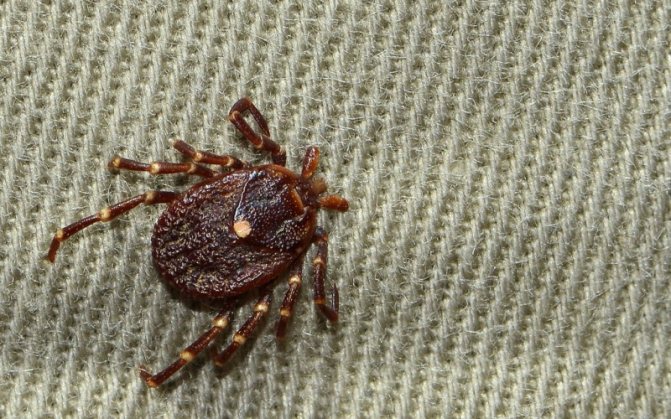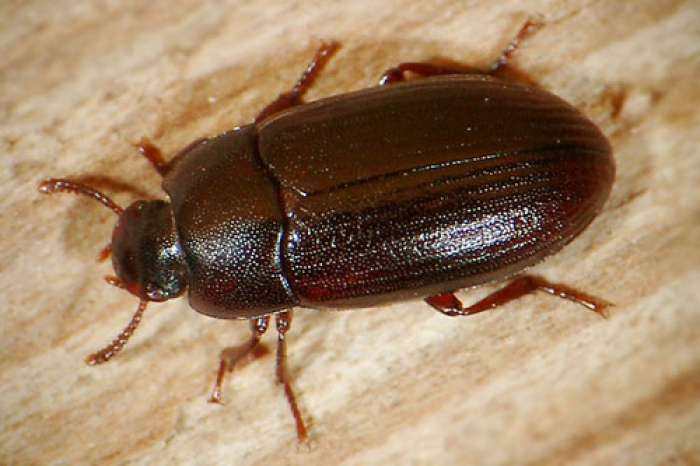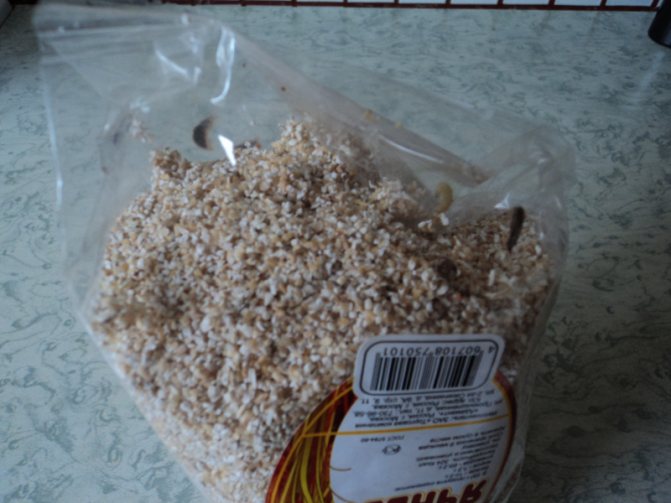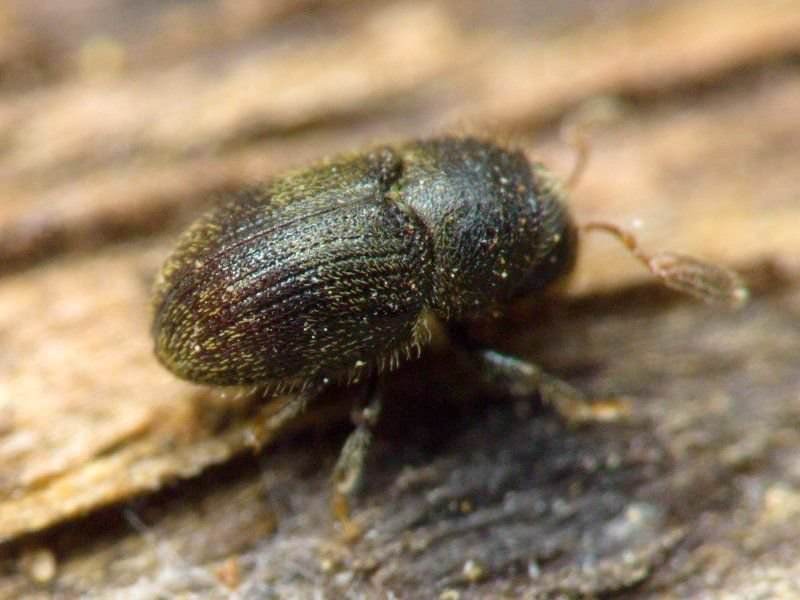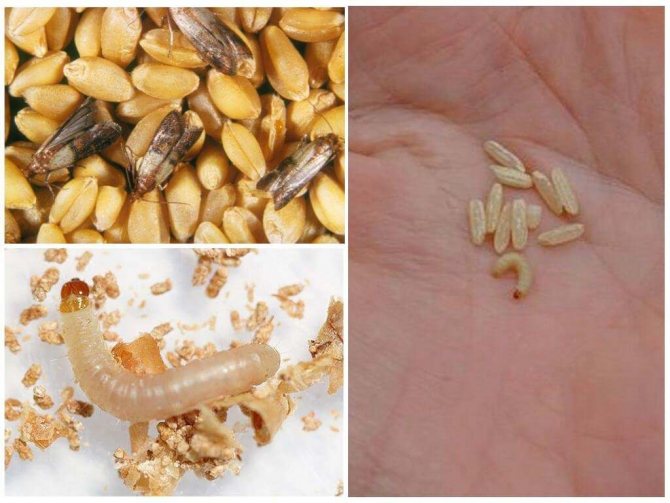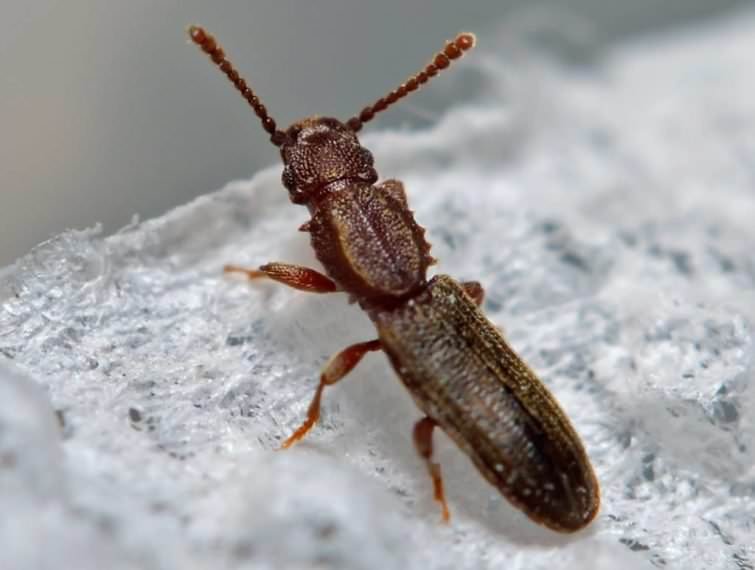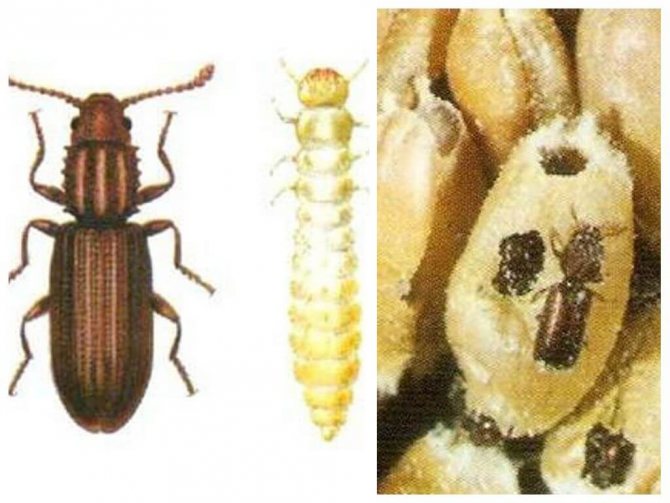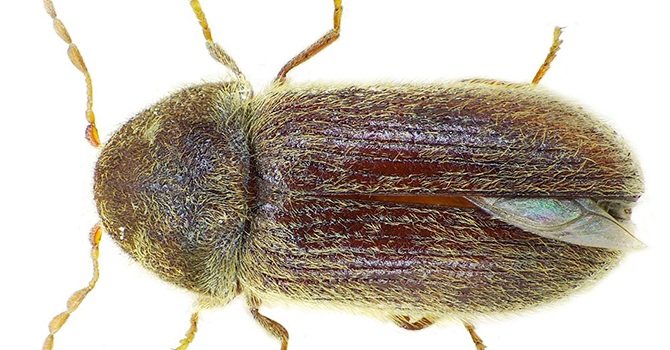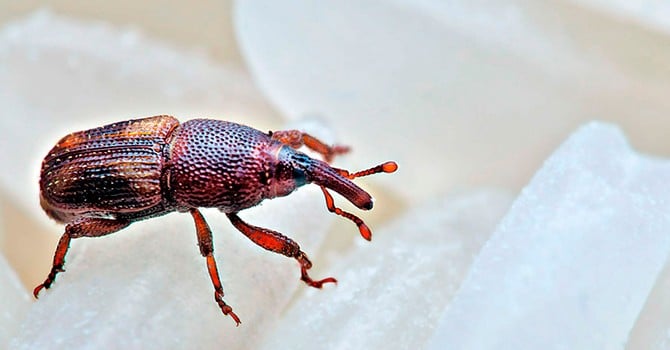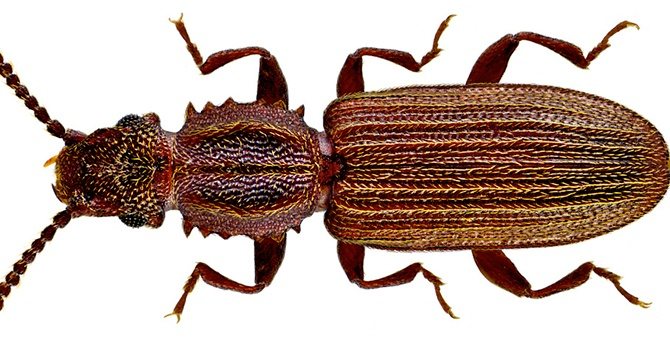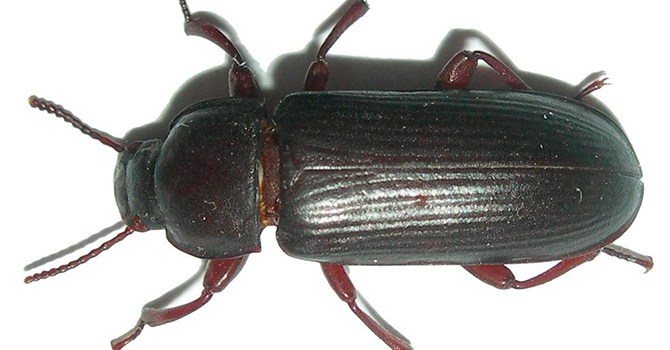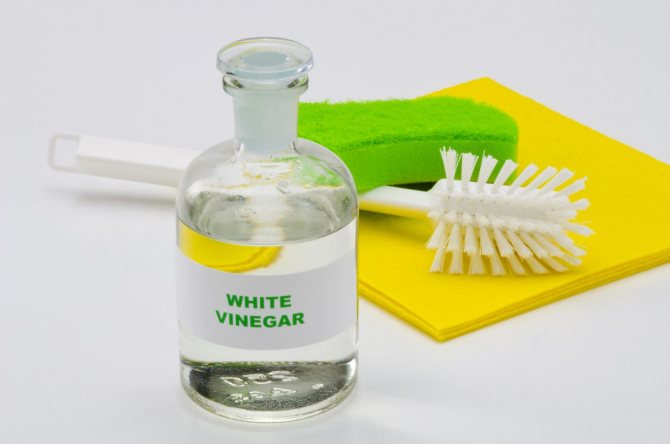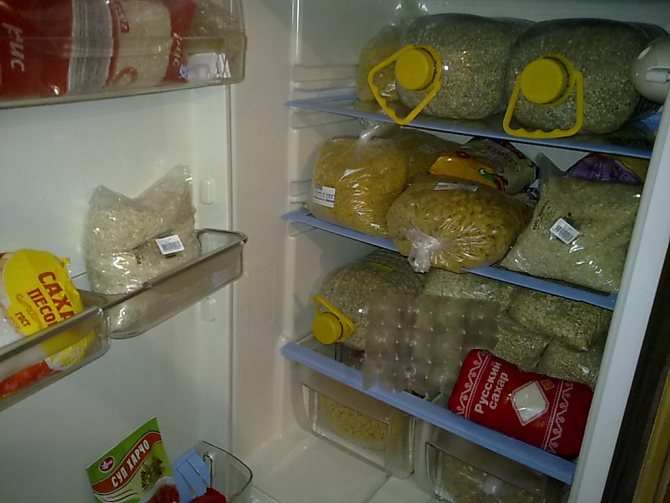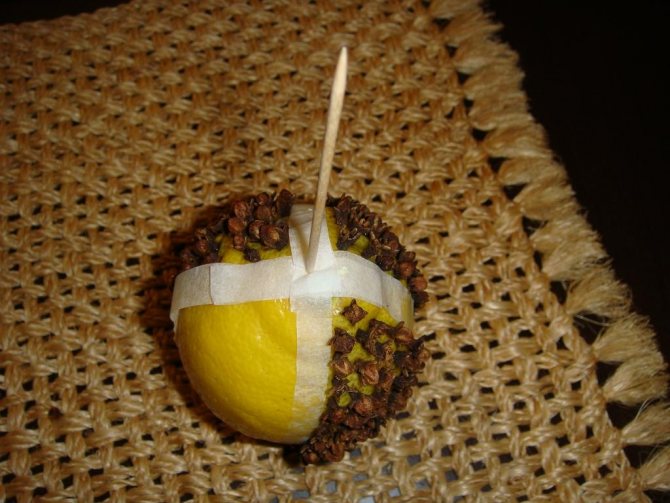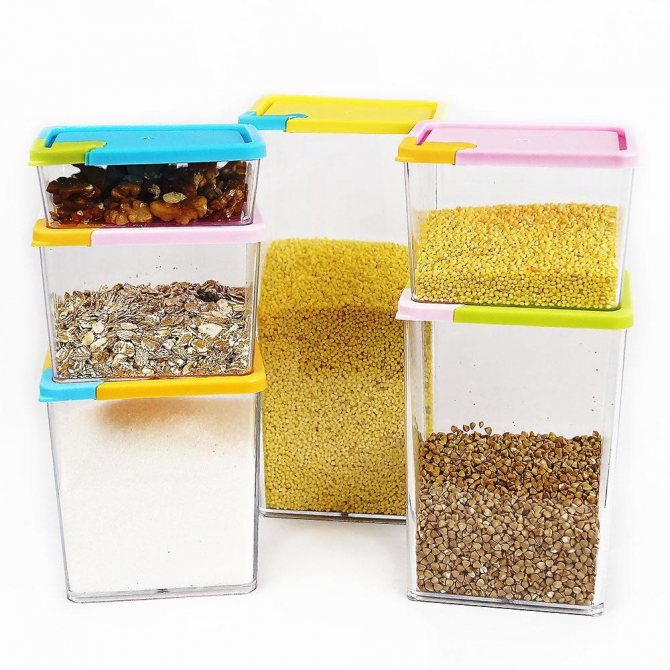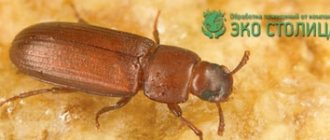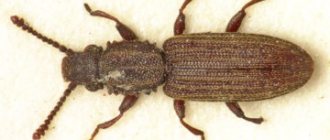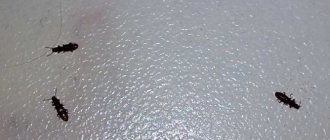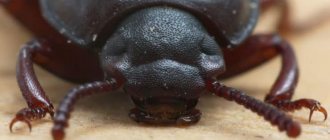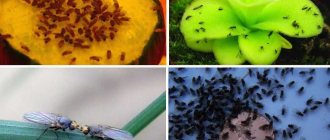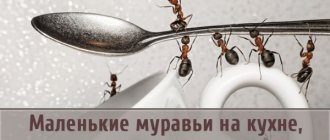Repair and decoration
06/01/2018 Anastasia Prozheva

All food products must be stored in good conditions. Many housewives are faced with such a nuisance as the appearance of bugs in flour and cereals. To sin on untidiness and carelessness is not worth it. After all, bugs can live in fruits, butter cookies and packaged packs of cereals.
Faced with a situation when bugs have started up in the cereals, how to get rid of pests, you need to act promptly, otherwise they can spread throughout the house. The bugs in the rump can also eat furniture, boards, and fabrics. Pests can attack all food supplies and even baked goods.
Small insects, despite their size, can spoil food and be a source of various diseases. Getting rid of bugs does not need to be delayed as they can simultaneously hit a large supply of food.
What bugs start in cereals and flour
- Red mucoid - already the name itself suggests, it is found most often in flour:
- It is a small, rusty-yellow beetle with a 1.5-2.5 mm body, which is densely covered with villi.
- Red flour eaters live in mills, flour mills, cereal factories and bakeries and feed there mainly on waste and rotten, too wet grain. But high-quality and well-dried grain and cereals, with a moisture content of up to 15%, are not interesting to these pests.
- They get into such products due to violations at the enterprises themselves and the uncleanliness of employees, but soon they die there.
- He can settle down in your kitchen only if he finds a humid habitat, with food waste. Moreover, it can be not only near cereals, but also a bag with cookies or dried fruits.
- The Surinamese muco-eater, he's just a flour-eater, he's a flour beetle:
- These are dark brown beetles, almost black in color, with a reddish tint. They have a hard, resilient carapace that perfectly protects them from the harsh environment.
- One of the most arrogant and ubiquitous pests, which most often gets in with flour or starch, but then easily gnaws at polyethylene and methodically creeps into all bags with cereals. With his jaws, he perfectly straightens not only bags, but also fabric bags and cardboard boxes.
- It is not afraid of low and high temperatures, it perfectly tolerates dry air and high humidity.
- Reproduces rapidly, leaving inconspicuous larvae everywhere.
- It feeds not only on all kinds of cereals, without exception, but also on pasta, cookies, coffee, tea and even spices.
- Bread grinder:
- It looks like a light brown bug, up to 3 mm in size.
- Inhabits bakeries at bakeries. From there, he gets into the apartment, along with the purchased bakery product.
- Unlike most of its “companions”, it is not afraid of sunlight, therefore it is not frightened and is easily detected.
- In addition to bread, they gladly eat cereals, and also do not disdain tea, coffee and even medicinal dried herbs. And they even add themselves to dry animal feed, compound feed and other grain mixtures.
- The food moth is a flying insect that can be mistaken for an ordinary house moth that hunts for your woolen blanket or fur coat, but no, they hunt for food:
- The food moth is a small butterfly with silvery wings and a body about 1 cm long.
- They do not reproduce very quickly, but they do it in the most unexpected places, flying from place to place, and laying eggs there.
- The larvae often settle in the crevices and joints of windows and cabinets, so getting rid of them, in fact, is difficult, you need to carefully clean the entire apartment, and not just the kitchen.
Control methods: first steps and baits
When preparing porridge from semolina and other cereals, pay attention to small inclusions: maybe you will notice the bugs themselves. The fight against small insects should be comprehensive. To get rid of pests, it is not enough to throw away all contaminated foods; it is imperative to carry out a general cleaning inside all kitchen cabinets. It is much easier to eliminate pests if you take action right away.
What if there are bugs in the rump? Take action!
- Look for bugs in the rest of the reserves.
- Determine the extent of the contamination by checking all products.
- If only a few individuals are found, try saving food. Simple methods are suitable for this: heat treatment and sieving.
- If the colony is large, all the bugs and larvae, along with the products, should be ruthlessly taken to the trash can. Do not try to dry cereals in the oven, in which bread grinders and flour eaters are wound up. Throw away paper-wrapped flour as well.
- Put spoiled food in the trash can immediately.
- Wash the entire contents of the cabinets (containers, glass and cans, dishes) with solutions of soda and vinegar.
- Pour clean cereals and flour into new containers with tight lids.
- After thorough cleaning, traps should be set to poison individual individuals.
All products in the kitchen must be sealed. Pest baits are placed in the dark corners of cabinets and near baseboards. Remember that pests are not indifferent not only to flour and cereals, but also to wood.
Bugs really do not like the smell of one of the types of chamomile - feverfew. Arrange its branches with flowers on the shelves of kitchen cabinets. For most insects, this is enough to avoid settling in your kitchen.


To avoid possible harm to humans, use herbal ingredients. This method allows deterrent agents to be placed directly among the food. Flour and cereals will not suffer from such a neighborhood. The muco-eater and the grinder will be scared away by the leaves of a laurel tree, twigs of wormwood, and dried cloves. Bugs don't like fresh garlic either.
Treat the interior of the furniture with a steam generator. To fix the result, rinse the surfaces with vinegar or soda solutions. Such processing is an auxiliary means, in itself it will not save from pests.


All rooms of the apartment will have to be disinfected, especially if there is still a pantry or the habit of eating in the living room. If the beetle colony was found only in the kitchen and was small, you can limit yourself to simple cleaning. In the fight against insects, it is important to destroy all the larvae in order to avoid a new wave.
Some housewives hide jars of cereals in the refrigerator - this is a good way to preserve food. But the volume of the refrigerator allows you to remove only a small amount of containers. A good tight lid is a great barrier to all insects. For additional protection from bugs, place a bay leaf or clove directly in the cereal or flour so that no bugs even get interested in the cereal.
How to make a tasty borax and sugar treat
The components of the remedy for grinders and flour-eating bugs do not have to be specially bought: most likely they already have at your home. The harmful insect tastes the sweet bait and transfers the agent to the rest of the individuals. The action is slowed down so that the individual has time to return to the main habitat and share with others.
Making bait is easy.
Mix boric acid with sugar in a 1: 1 ratio, add semolina, a slice of banana, flour or honey for taste and a denser consistency.
For the base, plastic bottle caps or simple cardboard squares are suitable. Apply a small amount of the mixture to the base and hide it in the far corners of the cabinets and under the kitchen furniture.
Insulate all products in hermetically sealed jars. Insects can bring poison to the bread bin, to jars of nuts, breadcrumbs and dried fruits. During processing, some containers can be transferred to the refrigerator, and some can be removed to the balcony or cellar. It is only important to make sure that they are not infected.
It is important to keep the bait a little viscous, so you will need to prepare a fresh batch from time to time. Especially if you are using sugar syrup or honey. Bugs are more active in eating fresh treats. After preparing the bait, immediately remove or discard the leftovers so that curious children or pets do not reach it. It is better not to store the mixture at home for safety reasons: it is toxic.
Ways to get rid of bugs
To get rid of bugs, it is necessary to carry out a whole range of measures to destroy not only themselves, but also their offspring, waste products. And above all, it is, of course, to carry out high-quality cleaning. Armed with rags and sponges, you will have to open all kitchen cabinets and empty and process all the shelves and drawers.
It is necessary to carefully sweep away all the remnants of cereals that could wake up and wipe everything just with a dry or slightly damp cloth. After that, you can proceed to processing:
- Table vinegar is great for more than just adults., but also by their larvae and eggs.
- Therefore, you need to dilute vinegar 9% approximately 1: 1 with ordinary water and wipe all surfaces with this solution. Moreover, not only horizontal, the shelves themselves, but also walk along the vertical ones, including the doors.
- Particular attention should be paid to the joints. If your furniture allows (not lacquered), you can pour the solution into a spray bottle and spray hard-to-reach joints, for example, in the area of the hinges on the doors.
- Then dry the furniture thoroughlyso that it does not get wet and does not deteriorate.
- Soda brine can be used instead of vinegar. Dissolve in a liter of warm water a couple of tablespoons of ordinary rock salt and a spoonful of baking soda, stir well, the solution is ready.
Now let's move on to the storage containers:
- If you choose glass or plastic containers for storage, then they need not only to be washed, but also thoroughly doused with boiling water, which will kill the eggs of the bugs.
- If you store cereals in cloth bags, then they should not only be washed, but also boiled.
- It's best not to do anything with plastic bags., but simply throw them out and moreover immediately into the garbage chute, and not into the trash can in the kitchen, from where the parasites will quickly crawl back.
After the main hiding places of the bugs are eliminated and processed, it is worth moving on to the rest of the items. Wipe everything with vinegar solutions: refrigerator, microwave and other appliances and furniture:
- Feverfew helps well, it is such a flower powder, which is made from Caucasian chamomile, absolutely organic and safe for humans and pets. It should be sprayed gently in cupboards. To do this, you can simply pour a little on a dry palm and gently blow in the direction of the shelf you need. Try to ensure that the powder gets into the crevices and joints.
- If your pest is a food moth, then to the above procedures, it is necessary to add treatment with any chemical agent from an ordinary moth. Moreover, you also need to sprinkle carpets, rugs, upholstered furniture, if any.
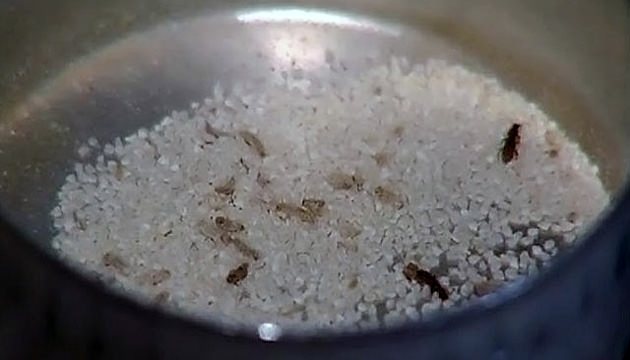

If you choose glass or plastic containers for storage, then you need to not only wash them, but also thoroughly pour boiling water over them, which will kill the eggs of the bugs.
Where can I find
Insects grow in different products, they love flour and pasta.
Rusks
Bread grinders, which are light brown in color, settle in bakeries. Such bugs fly well, hide under the windows in the apartment and gobble up crackers.
Cookies
Tiny insects love straws, wind up in dryers, biscuits. Both in a small store and in a supermarket, you can buy gingerbread and pastries, cookies with worms. Such guests appear during long-term storage in the kitchen.
Nuts
Under favorable conditions, food moths begin to multiply. It is not poisonous, but spreads quickly, lays eggs, from which larvae crawl out, adoring walnut kernels.
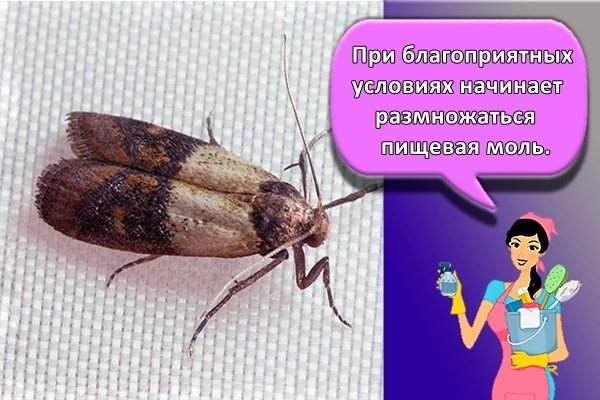

Dried fruits
From prunes, dried apricots, apricots, compotes rich in vitamins are obtained. But if the harvesting technology is violated, the storage rules are not followed, the dried fruits attack the caterpillars of the microscopic moth.
Food components
The products contain carbohydrates, fats, proteins, which are necessary for the normal functioning of the body. Insects look for food in different food components.
Bread
Not all mini-bakeries follow the technology of baking loaves and other products. And if the norms are violated, the bugs will climb into damp bread from the infected flour.
Beans
In legumes, weevils appear not only due to improper storage, parasites attack plants even in the garden before harvesting. If at least one bug is detected in the beans, they are sent to the freezer or hot oven.
Tea coffee
In the closed cabinets where spices and cereals are stored, grinders can be brought from the store, and the moth loves not only dried fruits. Insects do not mind eating tea, cocoa, coffee beans.
Flour
Bugs in the kitchen begin to feed on bulk foods and spices. Wheat, rye, and corn mills produce flour, which is packed in bags and bags and transported to stores or to a warehouse. You can buy such a product with bugs.
See also
How to quickly get rid of mosquitoes in an apartment and a house with folk and chemical means, a rating of the best devices
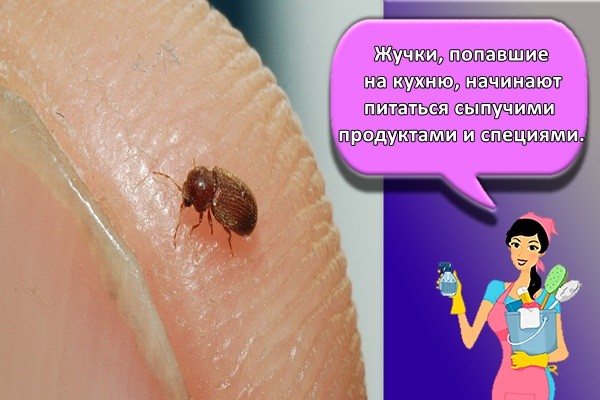

Vegetables
In recent years, a lot of pests have appeared on the fields. To cope with insects, crops have to be sprayed. But if cucumbers, cabbage or tomatoes are stored in improper conditions, then they begin to rot, worms and beetles appear.
Furniture
Grinders live in old sofas, chairs, wooden floors. Insect larvae feed on wood, making moves in it.
Appliances
In the microwave, in the electric meat grinder, in the gas stove and even in the refrigerator, cockroaches settle, which is not easy to get rid of. Insects grow and reproduce quickly, but you need to deal with them in an apartment carefully so as not to harm the household.
Hard to reach places
Even clean housewives have bugs in the kitchen, which are difficult to remove, because they hide in the cracks, in the ventilation, crawl under the bath. The springtail insect eats up the roots of flowers, climbing deep into a pot of soil.
The book moth lives under the wallpaper, in old archives, feeds on paper, products that contain paste. Shashel and bark beetle spoil furniture, wooden floors.
How to get rid of bugs forever
Getting rid of bugs forever will not work. Every time you return from the store with another package of cereals or flour, with a new freshly baked roll, you risk bringing insects into the house.
You can only prevent their occurrence as much as possible by following simple recommendations. And to reduce the risk of contamination of all products in the kitchen, as well as the reproduction and prosperity of uninvited guests.
There is no 100% way to protect yourself from bringing contaminated cereals into the kitchen. It somewhat reduces the risk, the goods, packed in sealed bags, can get into such bugs mainly at the stage of manufacturing and packaging of goods.
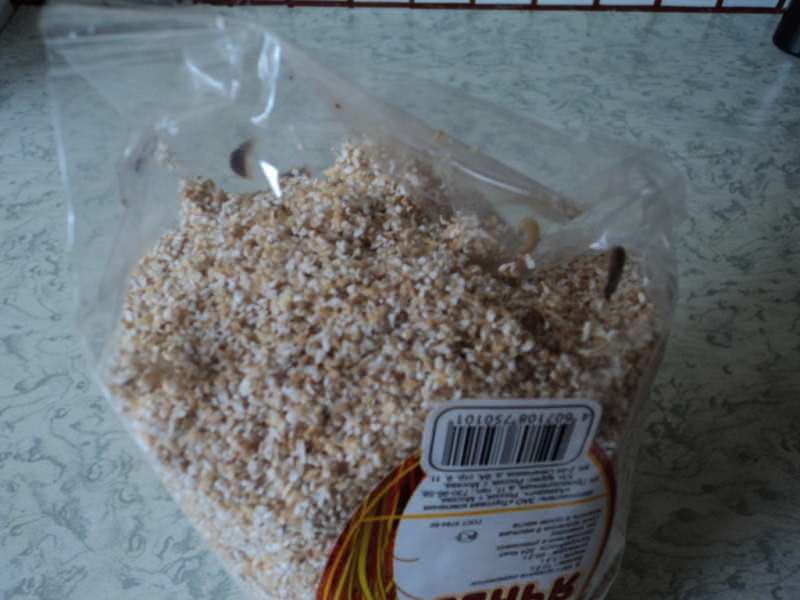

Every time you return from the store with another package of cereals or flour, with a new freshly baked bun, you risk bringing insects into the house.
How do they get into the house?
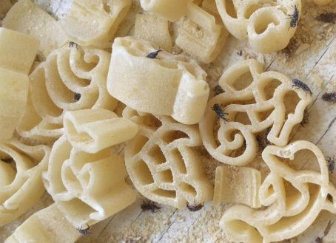

You buy bugs. By themselves, they do not start and do not fly from the street. Usually, insects come with loose grains, which are cheaper than packaged ones.
But, they can also be in sealed packaging. Therefore - look what you take. Although, in fairness, larvae are usually "sold" that cannot be seen.
The reasons for the appearance of bugs in cereals and flour
By themselves, bugs do not appear out of nowhere, and they themselves almost never enter a person's home:
- The most common reason for their appearance is that you brought them yourself, with any of the products. Alas, despite all the norms and GOSTs of production and sale, it is quite easy to buy a product infected with insects.
- Bugs can be in the croup already at the production stage., say, at the plant where it was made, in theory, it was neutralized from parasites, dried, threshed and packaged.
- May get caught in the bag during transport or in one of the storage warehouses.
- Often these midges live in stores and supermarkets., where they instantly master each new batch of goods.
- Or they settle in bakeries or bakeries and from there migrate to your kitchen in a loaf of bread or a bunch of dryers.
- Also, bugs can penetrate along with food from neighbors.who have shared a glass of flour, friends or family who have sprinkled you some nuts or dried fruit.
- Since these insects are quite tenacious and unpretentious, they can penetrate the cracks and joints of furniture. Therefore, one of the ways to accommodate such an inhabitant is to purchase used kitchen furniture or an interior detail, from which they will crawl out very quickly and get used to a new place, closer to your food.
Why do they appear?
Insects are very tenacious: an occasional larva and suitable food are enough for a tiny family to start growing. Why bugs start in cereals? Yes, just because you have access to them! Paper bags with flour, holes for ventilation in cans of semolina and rice, loose lids invite guests to eat. The groats lure the grinder, food moth, Surinamese flour-eater and flour beetle.
The food moth, however, loves dry pasta more. But by and large, a variety of types of products are suitable for pests:
- biscuits and vanilla croutons;
- mixtures of nuts with dried fruits;
- seasonings, food additives;
- dry semi-finished products;
- bread and its derivatives.
The bug chooses a warm place for settlement, where there is a supply of food. Many people live right in the cereals, and the grinder, for example, picks out cracks in wooden surfaces, gradually making them rotten. Of course, in the kitchen, all insects feel the most comfortable.
Bugs can be found in living quarters as well, but usually this means that they have already taken over the kitchen. If there pests colonize bags of cereals or an unpressurized bread bin, then in the living room it will be sofas and armchairs, where crumbs are sometimes rolled: many people eat while watching a movie.
Prevention of bugs
In order not to fight pests, it is better to protect yourself from their appearance and reproduction in advance. General advice is to keep it clean and to ensure that the cabinets are periodically ventilated.
If your furniture is airtight enough and the air circulates poorly in it, do regular ventilation by simply opening the cabinets for a while:
- Try not to make large stocks. This, of course, will not save you from pests, but it will significantly save your money, if the bug does settle down, then you will have to get rid of the products.
- Prefer sealed containers made of glass or plastic, with tight lids. Only such banks will not be overcome by Khrushchev.
- If you cannot deny yourself this and still stock up on sacks of food, then use dust. Plant-based dust can be bought on the market, less often in the store, in the insect department. This product must be scattered on the floor, under the bags. Bugs do not fit him, and he is absolutely safe for human health.
- Try to differentiate between products, rather than store everything together on the same shelf. For example, try to keep wet dried fruits away from cereals.
- Take advantage of the folk remedy for prevention - garlic. You can put a clove of garlic in a jar of cereals at the bottom. And between the jars, spread the dried bay leaf, which the parasites cannot tolerate.
- If you still store cereals in cloth bags, then "salt" such containers. To do this, prepare a saline solution, about a couple of tablespoons per 1 liter of water, and soak the bags in it. After half an hour, take them out and dry them. The parasites try to bypass such salted bags.
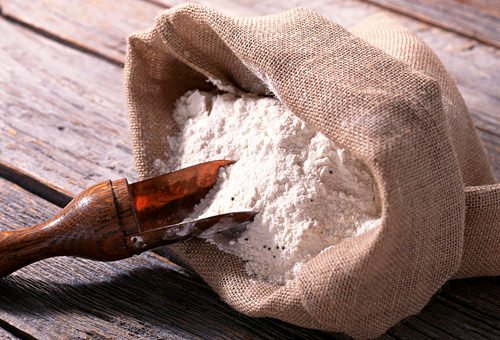

If you still store cereals in cloth bags, then "salt" such containers
How to prevent a new invasion?
There is no way you can prevent this. Little depends on cleanliness, but rather on attentiveness.
The only advice is to keep cereals in hermetically sealed glass jars specially designed for storing bulk products (here's a good article on this topic).
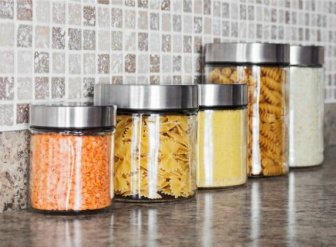

Although, this is not a panacea, but then, at least they will not scatter to other places.
Also, be sure to close the packages with spices, even with ordinary paper clips.
And, in general, there is only one prevention: just try not to buy anything for the future. Outside, I suppose, not the 17th year and at any time you can go to the store. It is better to buy less and a little more than a lot, cheap, but send half to feed the yard dogs.
Is it possible to eat beetle-infected cereals and flour
You cannot eat contaminated cereals and flour along with bugs. But after processing the products, it is possible, although, most likely, it will be simply unpleasant for you. Here you need to understand that even if you sort or sift the cereals, you still cannot get rid of the larvae, waste products, excrement and insect scales.
All these particles in small doses are not dangerous for a healthy person. But for a child or simply a weakened organism, weak immunity can have consequences in the form of intoxication. As a result, you can get upset stomach, vomiting and fever.
If there are no health problems, then you can remove the psychological moment and eat it after a certain treatment. It's about freezing or heating.
Almost all bugs and their offspring die when frozen to -15 degrees or heated to more than +50:
- For freezing, it is necessary to place a bag of cereals in the freezer for a day, or if the process takes place in winter, then take the food out onto the street or balcony, just keep in mind that the temperature should not be more than -15 degrees.
- Pour cereals on a baking sheet, distribute evenly over the entire surface and place for half an hour in the oven at 180-200 degrees.
- After freezing or heating, flour can be sieved through a fine sieve. By the way, the sieve holds not only the little bodies of the bugs, but also their larvae, and even eggs. Therefore, flour, after all the manipulations carried out, can be safely eaten.
Fight against flour eaters in production
Eliminating the likelihood of the occurrence of flour eater is the main task of companies in the food sector. Grain storage and production facilities are treated with special chemicals.


In addition, methods of heating, cooling and cleaning grain are used, cereals are thoroughly dried and stored at low temperatures. This helps prevent the beetle from appearing.
Quality departments monitor the purity of each batch of products sent to the counter.However, an unfair attitude to this stage of production is present and bears fruit - bugs appear in the kitchen of buyers and infect other products.
Tips & Tricks
- The main advice is, of course, cleanliness. combined with a few little tricks.
- When buying cereals or flour, do not rush to immediately pour it into the jar and put it in the closet. It is better to put the bag in the freezer overnight, or for a day. If the cereal is infected, then, of course, this will not get rid of the bugs. But at low temperatures, they will die, like their larvae and eggs, which means they will not reproduce and migrate to your other reserves.
- As a rule, when cleaning cabinets, wipe them with vinegar or water-salt solution. Dilute vinegar 9% with water 1: 1 or add a spoonful of regular baking soda and salt to 1 liter of water.
- Nutmeg is a very aromatic remedy. Grind the nut as much as possible on a grater or in a mortar and so that it does not scatter over the entire surface, take a wide adhesive tape and evenly sprinkle the resulting nut powder on its strips with a thin layer. Then shake off the excess from the strips and cut into the amount you need. Place such strips of scotch tape in the boxes. An effective and pleasant means of prophylaxis with bugs. You can also sprinkle ground nutmeg on the scotch tape, from bags.
- Lavender is another aromatic and simple remedy. Simply put the dried herb on the shelves.
What store insect repellents exist


We have already written what works best and what exactly can be used to remove bugs. But, in addition to such means, there are also all sorts of traps, for example, pheromone. You can buy a pair and arrange, for prevention purposes and to lure those individuals that survived the main treatment.
Using only traps is unwise and expensive. They do not act as quickly as we would like, judging by the reviews on the Internet. In the meantime, there are bugs in the kitchen - the cereals will become unusable.
What is the danger of the mucoed
The mucoid beetle settles in bulk products, making them completely unsuitable for further consumption. It feeds on cereals, flour, dried fruits, leaving behind husks and excrement. Thus, it also increases the moisture content of the products, causing rotting processes in them.
Small pests love warm and dark places, which is what kitchen cabinets usually are. Surinamese muco-eaters multiply very quickly: after laying, dozens of larvae become adults in a month. Such high fertility complicates and delays the process of fighting beetles.
The flour eaters are also dangerous because they not only spoil the food, but also infect them. They, once in the human body, can cause allergies and bowel disorders.
Therefore, you should always keep all loose and dry products clean.
Description
The Surinamese muco-eater belongs to a very common type of household pests. The length of its flat and elongated body is about 2-3.5 mm. The covers are colored brown, which can have various shades: from light to dark. The surface of the chitin is matte with short, tight-fitting villi. The head, like the body, has a flattened shape. There are antennae on the head, the length of which is no more than half the length of the body. The elytra of the mucoeda at the base are rectangular; there are punctate grooves on the surface. The wings of this insect are well developed - it is able to fly and is generally quite mobile.
The red flour eater is thermophilic and for its normal reproduction and development, an air temperature is required, which will be in the range from +25 to + 27 ° C with its relative humidity of 65%. In such conditions, 44 days are enough for the development of one generation.
On a note! If the air temperature drops below + 16 ° C, mucoids stop breeding! And at 0 ° C the insect dies within 22 days, at -5 ° C - 13 days!
Harmfulness
And what is the danger of the Surinamese flour-eater? First of all, by the fact that it is capable of severely damaging large stocks of flour, cereals and grain in a fairly short period of time. In addition, this pest can often be found in dried fruits and vegetables, often in those that have already become moldy.
On a note! At one time, a female muco-eater is capable of laying from 100 to 600 eggs. She lays clutches on a food substrate, which the larvae that appear later feed on!
The flour-eater is also dangerous in that it nullifies the value of contaminated foods. Eating them is highly discouraged, as there is a high likelihood of an allergic reaction.
Preventive treatment of bulk products
Home prevention measures will help protect yourself from the appearance of unwanted insects in the house:
- When buying cereals and pasta, carefully inspect the packaging and its contents. If you have the slightest suspicion, refuse to buy or opt for cereals from a well-known manufacturer.
- Use sealed containers (glass jars or plastic containers) for storage.
- Before pouring the cereal from the bag into the storage container, carefully examine it again and make sure there are no bugs.
- To prevent infection, spread the cereals on a baking sheet and place in a preheated oven for 30-40 minutes. The high temperature kills insects and their larvae.
- Purchased cereals can be sent to the freezer for 24 hours, and then packaged in sealed containers. It will also help get rid of the beetle larvae.
- Don't make huge stocks. The recommended period for spending cereals is no more than 2 months.
- Take stock inventories regularly. When in doubt about the quality of the cereal, dispose of it.
- Keep cupboards and other food storage areas clean and tidy.
- When buying dried fruits, rinse them, pour them over with boiling water and store only in the refrigerator.
- Regular airing of the kitchen will help to avoid high humidity and the appearance of some types of pests.
Compliance with these rules will prevent bigger troubles. and will save food.
It can be useful:
How to remove small midges in the kitchen
How to choose methods for getting rid of ants in the kitchen
How to get rid of the mold smell in the refrigerator

